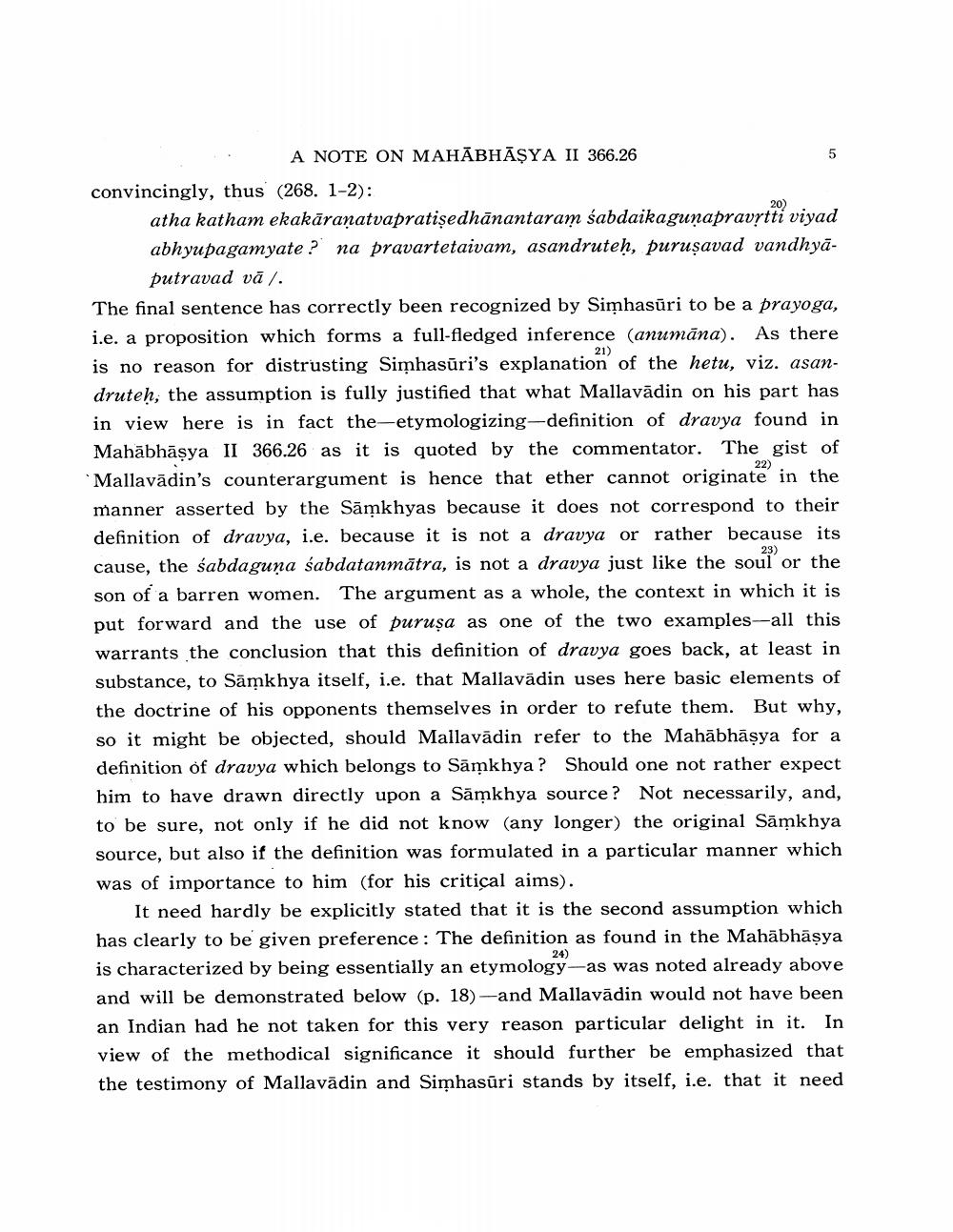Book Title: Note On Mahabhasya II 366 26 Gunasamdravo Dravyam Author(s): A Wezler Publisher: A Wezler View full book textPage 5
________________ A NOTE ON MAHABHAṢYA II 366.26 5 convincingly, thus (268. 1-2): 20) atha katham ekakaranatvapratiṣedhanantaram sabdaikaguṇapravṛtti viyad abhyupagamyate? na pravartetaivam, asandruteh, puruṣavad vandhydputravad vä/. 22) 23) The final sentence has correctly been recognized by Simhasüri to be a prayoga, i.e. a proposition which forms a full-fledged inference (anumana). As there is no reason for distrusting Simhasuri's explanation of the hetu, viz. asandruteḥ, the assumption is fully justified that what Mallavädin on his part has in view here is in fact the etymologizing-definition of dravya found in Mahābhāṣya II 366.26 as it is quoted by the commentator. The gist of Mallavadin's counterargument is hence that ether cannot originate in the manner asserted by the Samkhyas because it does not correspond to their definition of dravya, i.e. because it is not a dravya or rather because its cause, the sabdaguna śabdatanmatra, is not a dravya just like the soul or the son of a barren women. The argument as a whole, the context in which it is put forward and the use of puruşa as one of the two examples-all this warrants the conclusion that this definition of dravya goes back, at least in substance, to Samkhya itself, i.e. that Mallavädin uses here basic elements of the doctrine of his opponents themselves in order to refute them. But why, so it might be objected, should Mallavädin refer to the Mahabhāṣya for a definition of dravya which belongs to Samkhya? Should one not rather expect him to have drawn directly upon a Sämkhya source? Not necessarily, and, to be sure, not only if he did not know (any longer) the original Samkhya source, but also if the definition was formulated in a particular manner which was of importance to him (for his critical aims). 24) It need hardly be explicitly stated that it is the second assumption which has clearly to be given preference: The definition as found in the Mahābhāṣya is characterized by being essentially an etymology-as was noted already above and will be demonstrated below (p. 18)-and Mallavädin would not have been an Indian had he not taken for this very reason particular delight in it. In view of the methodical significance it should further be emphasized that the testimony of Mallavädin and Simhasüri stands by itself, i.e. that it need.Page Navigation
1 ... 3 4 5 6 7 8 9 10 11 12 13 14 15 16 17 18 19 20 21 22 23 24 25 26 27 28 29 30 31 32 33
